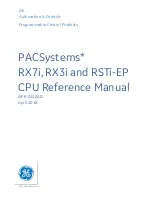
MERLIN LEGEND Communications System Release 6.0
System Manager’s Guide
555-660-118
Issue 1
February 1998
System Components
Page 3-22
Telephones
3
■
4 fixed display buttons, 4 unlabeled display buttons for screen selection,
and 8 fixed-feature buttons
NOTES:
1.
The MLX-5 telephone should not be an operator console.
2.
In Release 5.0 and later systems, the system recognizes the MLX-5D
as a 5-button telephone. In releases prior to 5.0, the system recognizes
the MLX-5 as an MLX-10. For this reason, when programming the
telephone, be careful not to assign lines or features to buttons that do
not actually exist on the telephone. When an MLX-5 telephone
replaces an MLX-10 or MLX-10D telephone, all line and feature
buttons must
first be removed from the extension by centralized
telephone programming, so that “phantom buttons” do not exist for the
new telephone. Programming instructions come with the equipment.
MLX-5 telephones can be wall-mounted.
Direct Station Selector
3
The Direct Station Selector (DSS), shown in
Figure 3–10
, is an adjunct that you
can connect to an MLX-20L or an MLX-28D telephone programmed as an
operator console (it cannot connect to any other telephone). DSSs enhance the
capabilities of both DLCs and QCCs and, when connected to an MLX-20L
telephone, help with programming. The DSS has 50 multifunction buttons, all of
which have lights.
The system operator can use DSS buttons for one-touch dialing and Transfer.
Buttons can be programmed with the following numbers:
■
Extension numbers
■
Line/trunk numbers
■
Pool dial-out codes (Hybrid/PBX only)
■
Calling group extension numbers
■
Paging group extension numbers
■
Park zone access codes
■
Automatic Route Selection (ARS) access codes
■
Remote Access dial code
■
Listed Directory Number (the extension for the QCC queue)
















































